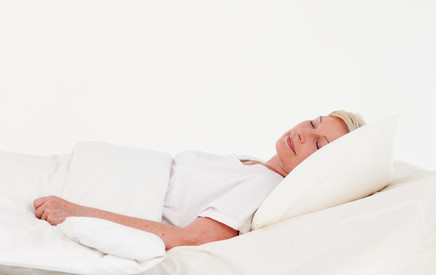The iSavta Team | 13.11.2019

Disclaimer: this is not medical advice of any kind. Please contact a physician for dealing with bed sores or any other medical issue.
Few weeks ago, we've conducted a short survey and tried to ask people around how much awareness they have about this certain condition. 3 people answered with much significance. From their answers and our own research, we were able to come with a summary about pressure sores.
One of the most common problems of caregivers is Bed Sores or Pressure Sores which greatly affects 1 out of 10 bed-ridden patients or patients confined to wheelchairs. Pressure sores or most commonly known as Bed Sores are skin injuries which can be cause by friction, temperature, air humidity, poor nutrition and hygiene, medications, constant pressure, shear force and age.
Pressure sores most often form on the skin over bony areas where there is little cushion between the bone and the skin. Most part of the body which is commonly affected are ankles, back of the head, elbows, toes, heels, knees, rims of the ears, shoulder blades, buttocks, tailbone, spine areas, back of arms and back of legs.
- Stage I - starts as a persistent area of red skin, which may be itchy, painful and may also feel warm, spongy or firm when touched. This is the stage when you can still prevent the condition to actually become a pressure sore. As soon as the pressure is relieved, the sore generally goes away rapidly.
- Stage II - skin loss has already taken place. This could be in the epidermis (the outer layer of skin), or the dermis (deeper down in the skin) - sometimes both. The pressure ulcer is at this point an open sore, similar to an abrasion or a blister. The surrounding tissue may appear red or purple.
- Stage III - there is now a deep wound, like a crater; the damage has gone below the skin. There is skin loss which occurs throughout the entire thickness of the skin. The underlying muscles and bone are not damaged.
- Stage IV - the most severe type of ulcer. Skin is severely damaged and there is tissue necrosis (surrounding tissue starts to die). Underlying muscles or bone (or both) may also be damaged. Tendons and joints may also be damaged. At this point there is a serious risk of developing a life-threatening infection.
People at greatest risk of getting pressure sores are those who are:
1. Confined to a wheelchair or bed due to immobility and cannot move without help. (In coma, paralysis, recovering from surgery)
2. Cannot control their bladder or bowels. Excess moisture can irritate or soften skin and lead to pressure sores.
3. Old people. As people age, the soft tissue becomes more fragile. In addition, skin becomes thinner and less elastic, and injures more easily.
4. Not eating a healthy diet with enough protein. Poor nutrition can lead to unhealthy skin and slow healing.
5. People who has diabetes.
6. People who are smoking. Smoking dries out the skin and reduces blood flow to the skin.
How Can You Prevent Pressure Sores:
These Tips was given to us by Mr. Yam Karki when we conducted the survey:
1) In order to help prevent bedsores, a number of activities can be done to ensure the best possible chances. Change positions regularly, every 15 minutes if the patient is in a wheelchair, and at least every two hours if he or she is in a bed. It also helps to avoid laying directly on the hip bones. Instead, try to lay at a 30 degree angle to reduce pressure to the hips. Avoid laying with a raised head of more than 30 degrees, as this encourages the body to slip down and raises the risk of friction injuries. Try using a pressure reducing mattress if the patient remain in a bed every day.
2) Inspect skin daily. Inspecting the skin is a great prevention tool to incorporate daily routine. Also keep skin clean and dry. If he or she have bandages, it’s imperative to make sure they are changed daily. If you notice any skin damage, foul smell, infections, or tenderness, you should seek medical attention immediately.
3) Pay close attention to nutrition. Malnutrition can lead to bedsores as well as other diseases and illnesses. It is essential to get enough calories, protein, fat, vitamins, and minerals in the diet. Consult a dietitian to help come up with an eating plan that appeals to the food preferences while supplying the necessary nutrients.
4.) Make him or her exercise every day. Exercising increases blood flow throughout the body, as well as promotes a positive mood and socialization, all three are important while in a nursing home. You should consult with a physical therapist for an exercise program that is most beneficial to them!
This came from Ms. Jennifer Pinto:
The best way is to change the position of the person who is suffering from this every 3 hours, the wound must be checked and kept clean, in the superfarm you can buy a tube called safromycin for antibacterial infection.
According to Ms. Tresa Jacob,
Keeping the site clean and free of debris is important to promote healing,change the position every 2 hrly,and apply Antibacterial drugs may be used to treat infection. Pain medication to relieve or reduce any discomfort.
As much as we want to list down hundreds of information on how to prevent bed sores, we don't want to stick on what we found on the internet. As much as possible, we want to share tips which came from actual caregivers who has first-hand experience on dealing with people who suffered or suffering from bed sores.
However, we received just 3 but very significant replies from our readers so we decided to include some more tips that could actually help those caregivers who are currently dealing with patients in the same situation.
Here are some few more tips:
1. Keep skin clean and free of sweat, wound drainage, urine, and feces. Use a mild cleansing soap to keep skin healthy, but be careful not to scrub the skin too hard.
2. Moisturize skin with lotion, and limit exposure to dry, cold weather, because dry skin is more easily damaged.
3. Do not use antiseptic solutions such as Betadine, Hibiclens, or hydrogen peroxide. These can damage new and normal tissue.
4. Provide good nutrition through a healthy diet with enough protein to keep skin healthy and able to heal more quickly.
5. Maintain a healthy weight, without swings of gain or loss. Weight changes can lead to increased pressure on certain body areas, or to problems with support equipment that no longer fits.
6. Avoid smoking and tobacco smoke, which dries out the skin and reduces blood supply to the skin.
If you have more tips and information that you can share with us, please feel free to comment below and who knows, you can help a fellow caregiver or save someone who is dealing with Pressure Sores.
Thanks a lot for all the contributers to this article!



